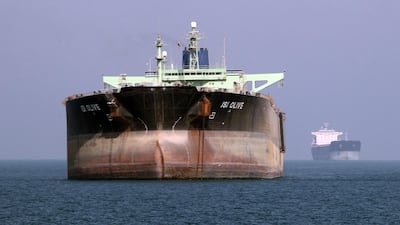Brent oil prices have plunged 25 per cent since reaching a four-year high of more than $86 per barrel in early October.
But several developing factors have pushed prices lower in the past few weeks.
Why are oil prices falling?
Crude prices are influenced by several variables such as speculation on oil trades (known as futures), inventory levels, geopolitics, global economic growth and the relationship between global supply and demand.
Oil prices, which spiked in October in the run-up to the reimposition of US sanctions on Iran’s oil industry on November 5, fell after the US granted waivers to eight countries importing Iranian crude for a 180-day period.
Before the sanctions, Opec and its allies in a group led by Russia had increased output to make up for any anticipated oil shortage due to the sanctions.
The Opec+, as the alliance is called, cut output by 1.8 million barrels of oil per day starting January last year up to May this year to lower oil inventories and shore up prices, which plunged to less than $30 a barrel in the first quarter in 2016. The agreement struck in 2016 was the first such alliance between Opec and the Russia-led group.
But since May, Opec+ have ramped up output while at the same time the US continued to grow its oil production, which reached a record of 11.6 million bpd earlier this month. US output outstripped the production of Saudi Arabia and Russia.
Meanwhile, global economic growth is under threat from heightened trade tensions, economic instability in some emerging markets and uncertainty over the UK’s exit from the European Union.
What are countries doing to help raise oil prices?
The Opec+ alliance may cut its output by up to a million bpd next year, if needed, to balance the market, Saudi Oil Minister Khalid Al Falih said this week.
Opec secretary general Mohammad Barkindo said the rise of non-Opec supply was beginning to look “alarming".
Opec is meeting on December 6 and is expected to decide then whether to carry on the production cuts. The group’s strategy is to lower oil inventories to their five-year average.
What is the outlook for oil demand and supply?
The 14-member Opec expects oil supply from its rivals to outpace its own output next year.
Demand for its crude will be about 31.5 million bpd, which is 500,000 bpd less than its forecast two months ago and 1.4 million bpd below current output, Opec said this week.
Non-Opec oil supply will surge by 120,000 bpd next year and the US, Canada, Kazakhstan and Russia will lead the group of countries contributing to this increase. Meanwhile, global oil demand growth forecast was trimmed by 70,000 bpd amid concerns over the health of emerging economies and overall global economic expansion.
________________
Read more:
Oil price drops to $65 as supply-and-demand concerns flare
Potential oil production cuts won't impact GCC economies, IMF official says
Opec and allies may cut up to a million barrels per day, says Saudi oil minister
Quicktake: Deciphering the energy industry's jargon
________________

